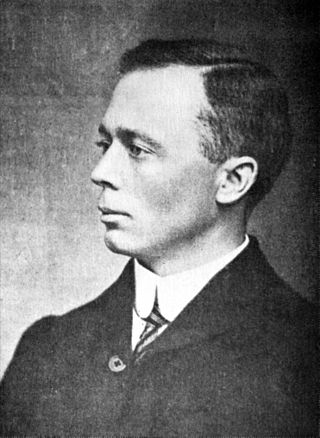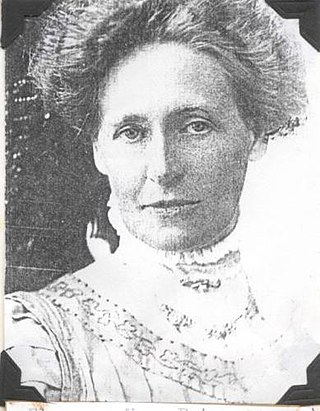Related Research Articles

Kirstenbosch is an important botanical garden nestled at the eastern foot of Table Mountain in Cape Town. The garden is one of 10 National Botanical Gardens covering five of South Africa's six different biomes and administered by the South African National Biodiversity Institute (SANBI). Prior to 1 September 2004, the institute was known as the National Botanical Institute.

William Henry Harvey, FRS FLS was an Irish botanist and phycologist who specialised in algae.

Harry Bolus was a South African botanist, botanical artist, businessman and philanthropist. He advanced botany in South Africa by establishing bursaries, founding the Bolus Herbarium and bequeathing his library and a large part of his fortune to the South African College. Active in scientific circles, he was a Fellow of the Linnean Society, member and president of the South African Philosophical Society, the SA Medal and Grant by the SA Association for the Advancement of Science and an honorary D.Sc. from the University of the Cape of Good Hope.

Peter MacOwan was a British colonial botanist and teacher in South Africa.

Margaret Rutherford Bryan Levyns was an eminent South African phytogeographer, botanist and taxonomist.

Henry Harold Welch Pearson was a British-born South African botanist, chiefly remembered for founding Kirstenbosch National Botanical Garden in 1913.

The Bolus Herbarium was established in 1865 from a donation by Harry Bolus of his extensive herbarium and library to the South African College, which later became the University of Cape Town.

Edwin Percy Phillips was a South African botanist and taxonomist, noted for his monumental work The Genera of South African Flowering Plants first published in 1926.

Mary Maytham Kidd born Mary Catherine Maytham, daughter of Albert Archibald Maytham, was a South African botanical artist.

Harriet Margaret Louisa BolusnéeKensit was a South African botanist and taxonomist, and the longtime curator of the Bolus Herbarium, from 1903. Bolus also has the legacy of authoring more land plant species than any other female scientist, in total naming 1,494 species.

Elsie Elizabeth Esterhuysen was a South African botanist. She was described as "the most outstanding collector ever of South African flora", amassing 36,000 herbarium specimens.

Arabella Elizabeth Roupell was an English flower painter, noted for an anonymous set of flower paintings published in 1849 under the title 'Specimens of the flora of South Africa by a Lady.'
Frances Margaret Leighton was a South African botanist and educator. After graduating from Rhodes University with her M.Sc degree in 1931, she worked at the Bolus Herbarium until 1947. Her primary research interests were focused on monocots, and her work impacted the Ornithogalum and Agapanthus.
Mary Agard Pocock was a South African phycologist.

Katharine Saunders (1824–1901) was a British-born South African botanical illustrator, the sixth of seven children of the Revd Canon Charles Apthorp Wheelwright and Anna Hubbard of Tansor, Northamptonshire.

Edmund André Charles Louis Eloi Schelpe aka Ted Schelpe was a South African botanist, phytogeographer and taxonomist, specialising in pteridophytes, bryophytes and orchids.

Dierdré "Dee" Anne Snijman is a South African botanist and plant taxonomist who is notable for studying and writing extensively on bulbs. She has described over 120 species and has written comprehensive works on South African flora. She received the 1997 Herbert Medal from the International Bulb Society for her research on Amaryllis.
Winsome Fanny Barker was a South African botanist and plant collector noted for her work as Curator building the collection at the herbarium of the Kirstenbosch National Botanical Garden, as well as her research on Amaryllidaceae, Liliaceae and Haemodoraceae.

Averil Maud Bottomley was a South African mycologist. She was a member of the Southern Africa Association for the Advancement of Science and a founding member of the South African Biological Society.

Florence Mary Paterson, née Hallack, also known as Mrs. T.V. Paterson, was a South African plant collector. Her specimens are kept in the herbarium of Albany Museum and the Bolus Herbarium of the University of Cape Town. She is honored in the plant name patersoniae and genus name Neopatersonia.
References
- ↑ Brown, A. C. (1977). A History of Scientific Endeavour in South Africa: A Collection of Essays Published on the Occasion of the Centenary of the Royal Society of South Africa. Royal Society of South Africa. p. 249.
- ↑ Creese, Mary R.S.; Creese, Thomas M. (2010). Ladies in the laboratory III South African, Australian, New Zealand, and Canadian women in science : nineteenth and early twentieth centuries : a survey of their contributions. Lanham, Md.: Scarecrow Press. pp. 18–22. ISBN 9780810872899.
- 1 2 3 Gunn, Mary; Codd, L. E. W. (1981). Botanical exploration of southern Africa. Cape Town: A. A. Balkema. pp. 334–335. ISBN 0869611291.
- ↑ Biography of Edith Layard Stephens at the S2A3 Biographical Database of Southern African Science
- ↑ Stafleu, Frans Antonie; Cowan, Richard S. (1976). Taxonomic literature : a selective guide to botanical publications and collections with dates, commentaries and types. Vol. 5 (2nd ed.). Utrecht: Bohn, Scheltema & Holkema. p. 895. doi:10.5962/bhl.title.48631. ISBN 9031302244.
- ↑ International Plant Names Index. Stephens.